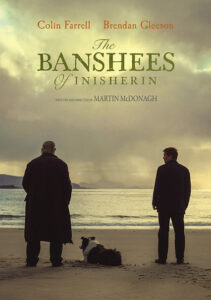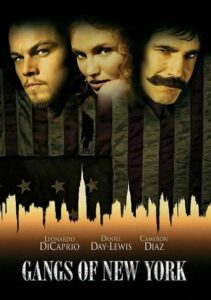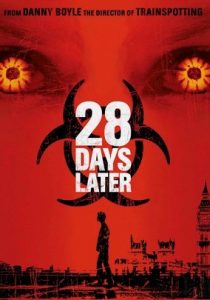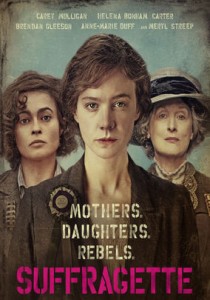The Banshees of Inisherin-2022
Director Martin McDonagh
Starring Colin Farrell, Brendan Gleeson, Kerry Condon
Scott’s Review #1,348
Reviewed March 2, 2023
Grade: A
Martin McDonagh, who directed The Banshees of Inisherin (2022), is known for films such as In Bruges (2008) and Three Billboards Outside Ebbing, Missouri (2017).
His films typically feature dark humor stories about humanity and unpleasantness, and require some reflection to consider the characters’ true nature.
This film stars Colin Farrell and Brendan Gleeson, who reunite after their collaboration in In Bruges for another turn playing men dealing with depression, loneliness, and the complexities of friendship.
McDonagh is British/Irish, so the period and surroundings likely resonate well with him. The gorgeous islands off the coast of Ireland are integral to the story and serve as a counterbalance to the troubles and tribulations of the characters.
Pádraic (Farrell) and Colm (Gleeson), are lifelong friends and inhabitants of an island off of mainland Ireland. They find themselves embroiled in a feud after Colm one day announces he is ending their friendship.
This confuses Pádraic, who vows to mend the relationship at all costs.
Their reunion is thwarted by severed fingers, a fire, and the mysterious death of Pádraic’s beloved pet donkey, Jenny.
Mixed into the events are Pádraic’s sister, Siobhán (Kerry Condon), and the troubled young islander, Dominic (Barry Keoghan), who have their own problems to face.
The Banshees of Inisherin is a slow-paced and cerebral film, and many questions will be pondered but left unanswered. This will likely disappoint viewers who prefer a clear conclusion to the characters’ lives.
However, this is a key part of the film’s beauty. I might have liked a big, no-holds-barred argument scene between Pádraic and Colm, or more closure in Dominic’s or Siobhán’s stories. Instead, McDonagh challenges the audience to feel perplexed or unsure and use their interpretations.
For example, I wonder if Dominic was being sexually abused by his policeman father, who has a penchant for sitting naked in the living room chair and masturbating.
Or, what does Siobhán leave the island for, and will she ever return?
On a separate note, I wonder if McDonagh was influenced by the epic 1970 gem Ryan’s Daughter, directed by David Lean. The flowing Irish landscapes and unpleasant, embittered townspeople have key similarities.
The winning formula is ambiguity. The audience is treated to terrific acting all around, particularly among the four principals (Farrell, Gleeson, Condon, and Keoghan), all of whom were awarded Academy Award nominations.
Each provides subdued performances dripping with contained emotion and complexities buried beneath the surface.
Audiences can draw their conclusions, but my takeaways were loneliness, longing for new adventures, depression, and begrudgingly accepting a meager existence amid the most lavish countryside one can find.
The 1920s Irish Civil War serves as the backdrop, although those events are not central to the plot.
Since Colm’s desire to create music is a central part of the story, the accompanying music is crucial to the film. The use of fiddles is incorporated rather than traditional Irish music, except in the sprinkling of pub scenes.
A hearty round of applause is due to McDonagh and company for crafting and performing a thinking man’s film. The comic bits are not syrupy but tragic in their honesty and cadence.
The Banshees of Inisherin (2022) separates cinematic thinkers from passive viewers with a quiet story about the friendship between two men and the layers that exist beneath the surface.
Oscar Nominations: Best Picture, Best Director-Martin McDonagh, Best Actor-Colin Farrell, Best Supporting Actor-Brendan Gleeson, Barry Keoghan, Best Supporting Actress-Kerry Condon, Best Original Screenplay, Best Film Editing, Best Original Score



